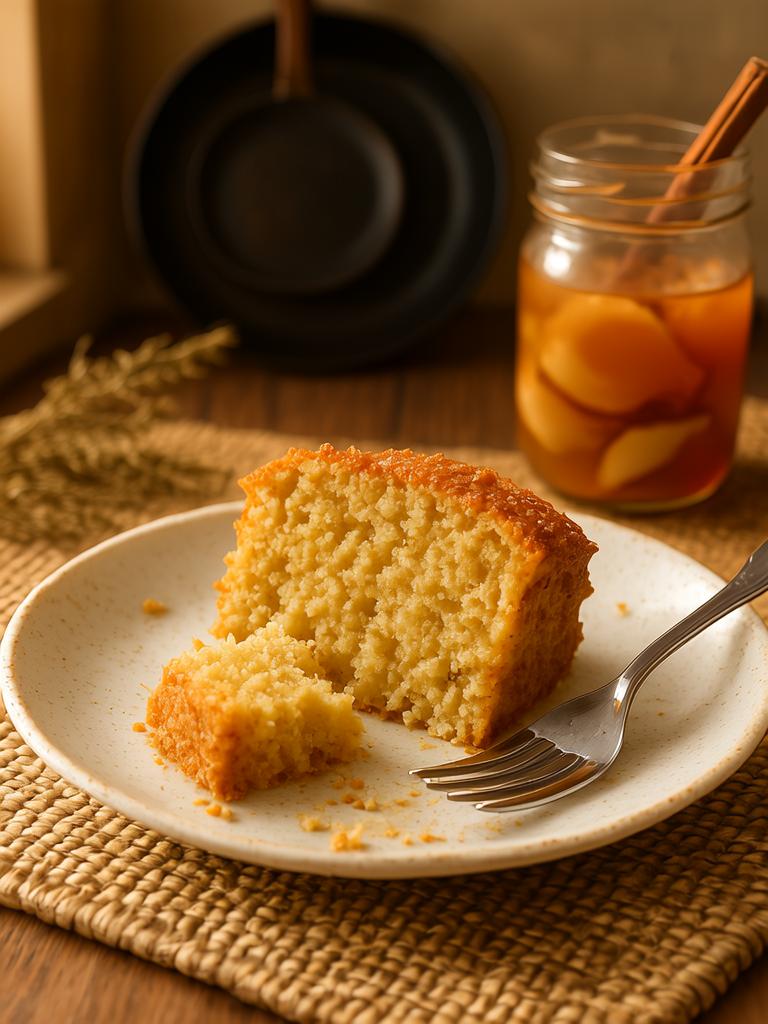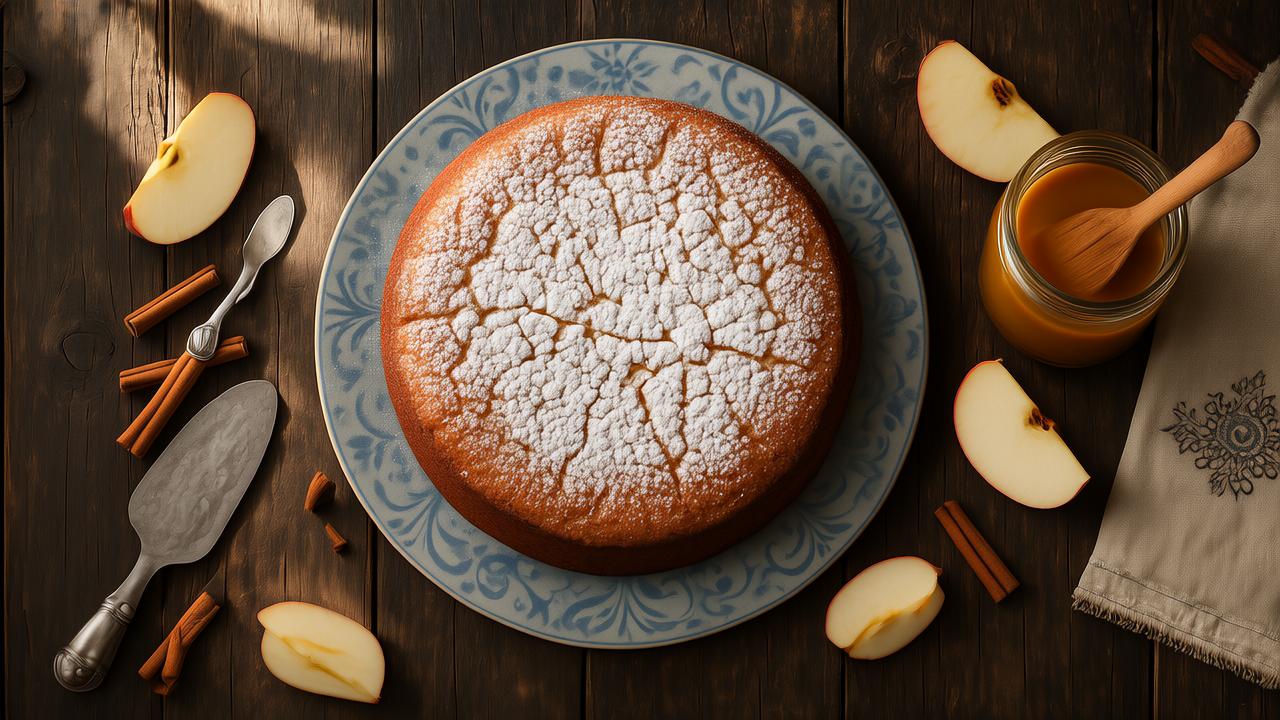It doesn’t whisper. It shouts flavor.
Old Fashioned Amish Applesauce Cake isn’t just dessert. It’s living proof that simple things—done right—don’t ever go outta style.
You bite into it, and suddenly it’s 1910 again. Wooden kitchens. Cast iron stoves. The smell of cinnamon and cloves swirling like smoke around a hot cup of coffee.
This cake is rich in history, deep in flavor, and unapologetically rustic. It’s the kind of cake that doesn’t need frosting to be loved. No frills. Just gutsy spice, moist crumb, and old-world charm.
In this guide, we’re digging deep. You’ll learn the roots, the science, the secret techniques—plus expert tweaks that elevate this humble classic into a professional’s showcase piece.
What Makes Amish Applesauce Cake Special?
Let’s be blunt. It’s not flashy.
There’s no glaze. No piped rosettes. No rainbow sprinkles.
What you do get is dense, spiced, gorgeously moist crumb that somehow tastes like fall and grandma’s hug had a baby.
Applesauce is the main character here. Not a sidekick. It’s what gives the cake its deep moisture, subtle tang, and binding power. And the Amish? They’ve been using applesauce in baking long before it became a “healthy” swap.
Back in the day, butter and eggs were luxury. Applesauce was cheap, plentiful, and shelf-stable. It was a practical solution with magical results.
Also worth noting: this cake stores like a dream. Wrapped tightly, it tastes better on Day 3. The spices settle. The crumb tightens. It ages like a good rye loaf or grandma’s cast iron pan.
The Cultural Backbone of the Cake
The Amish didn’t invent applesauce. But they sure elevated its use.
This community’s baking is defined by thrift, seasonality, and resourcefulness. Their cakes are heavy-hitters in taste, not sugar bombs. And when apple harvest came around? Everything was put to use.
Dry apples. Apple butter. Cider. And yep, applesauce.
Applesauce cake was a staple not just because it was easy, but because it celebrated preservation. That’s a huge deal when you’re living without electricity or refrigeration.
It’s baked in large batches. Shared during barn raisings, church potlucks, and birthdays. Sometimes with nuts or raisins. Sometimes plain.
It’s always made with soul.

Ingredients Breakdown (And Why They Matter)
Let’s zoom in. Each ingredient pulls serious weight here.
1. Applesauce
Use unsweetened. Use homemade if you can. Smooth texture is best. Chunky applesauce can throw off the structure unless you’re into weird pockets of fruit. (No judgment.)
Pro tip? Roast your apples before making sauce. The caramelization intensifies flavor. Adds that quiet layer of umami only chefs notice—but everyone tastes.
2. Flour
All-purpose is fine. But if you want depth? Mix 75% all-purpose and 25% whole wheat pastry flour. It adds a nuttiness that complements the spice like a glove fits your hand.
3. Fat (Butter or Oil)
Old-school Amish used lard or homemade butter. Today, neutral oil (like grapeseed or vegetable) gives a moister crumb. Butter gives flavor. You pick.
Or do half ‘n’ half. That’s what I do in my test kitchen.
4. Sugar
Brown sugar is the star. Its molasses notes echo the spice beautifully. White sugar? Flat. Dull. Don’t even.
Try dark brown sugar for a deeper punch. Add a tablespoon of sorghum or molasses if you’re feeling extra heritage-y.
5. Eggs
Two’s the standard. But if your applesauce is super wet, reduce to one. Texture’s a balance game.
6. Spices
This ain’t cinnamon-only territory. Go bold. Use:
- 2 tsp cinnamon
- 1 tsp nutmeg
- ½ tsp cloves
- ½ tsp allspice
Cloves are strong—use a light hand or risk a medicinal taste. And for heaven’s sake, use fresh spices. Not that jar from 2012.
7. Mix-ins
Golden raisins. Toasted walnuts. Chopped dates. All optional. But the texture contrast they bring? Next-level.
Soak raisins in warm apple cider first. Just do it. Trust me.
8. Leavening
Baking soda is your friend here. It reacts with the natural acid in applesauce. Don’t skip the salt either. A flat cake usually means it wasn’t seasoned right.
The Technique (Where Most Folks Go Wrong)
Now, the method’s simple—but deceptively easy to mess up.
Creaming is not required. You’re not building an airy sponge.
Instead:
- Mix dry ingredients in one bowl.
- Mix wet in another.
- Combine with a spatula. Stir only till moistened.
Overmix and the cake gets tough. Gummy. Sad.
Pour into a greased pan. 9×13 works. Or two loaf pans if you want giftable sizes.
Bake at 350°F for 40–45 minutes. A toothpick should come out with a few moist crumbs, not clean. If it’s clean, it’s dry.
Cool completely before slicing. The cake needs time to settle. Warm slices will crumble.
Pro Bakers’ Tweaks and Elevations
Want to stand out at a bake sale? Here’s how professionals upgrade this humble relic:
1. Toast Your Spices
Just like cumin or coriander, warming spices bloom in fat. Heat them briefly in your butter/oil before mixing. Flavor goes from 2D to 4K.
2. Add Espresso Powder
Just a smidge. ½ tsp. It doesn’t taste like coffee. It deepens the molasses. Darkens the crumb. Brings mystery.
3. Glaze Smart
A browned butter glaze with a touch of maple syrup will change lives. Not too sweet. Just silky.
4. Use Applejack or Calvados
Sub a few tablespoons of liquid with apple brandy. Now you’ve got a grown-up cake that pairs beautifully with sharp cheddar or a scoop of sour cream ice cream.

Storage and Serving Notes
Storage:
Wrap in parchment, then foil. Or airtight container. Room temp, 4 days. Fridge? Up to 7. Freezes beautifully up to 3 months.
Serving:
Dust with powdered sugar. Or eat cold from the fridge like a savage (no shame). Toast slices on a buttered skillet and serve with whipped crème fraîche.
Serve with tea. Or a tall glass of cold milk. Or mulled cider if you’re living your best cozy life.
Addressing Misconceptions
“Isn’t it a spice cake?”
Not exactly. Spice cake is broader. This cake is defined by applesauce. It’s not a flavoring—it’s the structure.
“Too old-fashioned for modern palates?”
Hardly. The demand for rustic, comforting bakes has soared. Sourdough? Shoofly pie? We’re in a heritage revival.
A 2022 trend report from the Culinary Institute of America noted a 27% increase in searches for “vintage dessert recipes.” Applesauce cake’s back, baby.
“Can I make it vegan?”
Sure can. Use flax eggs (1 tbsp flax + 3 tbsp water = 1 egg) and oil. Works great. Even better with coconut sugar if you’re watching refined sugars.
Final Thoughts: This Cake’s Not Just a Recipe—It’s a Legacy
Old Fashioned Amish Applesauce Cake isn’t a trend. It’s a torch.
You’re not just baking a cake. You’re carrying forward a piece of culinary tradition that’s survived generations because it works. Because it’s real. Honest. Unfussy.
And when you nail it? When that crackly brown top gives way to a warm, spicy interior that sticks to your ribs in the best possible way?
You’ll understand why this cake is still here, 100 years later.
Make it. Share it. And let that legacy live on—one bite at a time.
FAQs
What makes Old Fashioned Amish Applesauce Cake different from regular spice cake?
Applesauce is the main ingredient, giving it moisture, structure, and a deeper flavor profile.
Can I use store-bought applesauce for this cake?
Yes, but use unsweetened applesauce for the best results.
How long does Amish applesauce cake stay fresh?
It stays moist for up to 4 days at room temp, 7 in the fridge, and freezes well for 3 months.
Can I make this cake without eggs?
Yes, flax eggs or commercial egg replacers work great for vegan versions.
What’s the best flour to use?
All-purpose works fine, but a mix of all-purpose and whole wheat pastry flour adds depth.
Can I add nuts or raisins?
Absolutely—golden raisins and toasted walnuts are traditional and delicious add-ins.
Does it need frosting or glaze?
Not at all, but a browned butter or maple glaze can elevate the flavor beautifully.
Can I make it in advance?
Yes, in fact, it tastes better the next day as the flavors meld.
What’s the ideal pan for baking this cake?
A 9×13-inch pan or two loaf pans works best for even baking.
Is this cake too old-fashioned for modern tastes?
Not at all—its comforting flavor and rustic charm are making a strong comeback.
Ask ChatGPT

Mariana is a passionate home cook who creates delicious, easy-to-follow recipes for busy people. From energizing breakfasts to satisfying dinners and indulgent desserts, her dishes are designed to fuel both your body and hustle.
When she’s not in the kitchen, she’s exploring new flavors and dreaming up her next recipe to share with the Foodie Hustle community.

